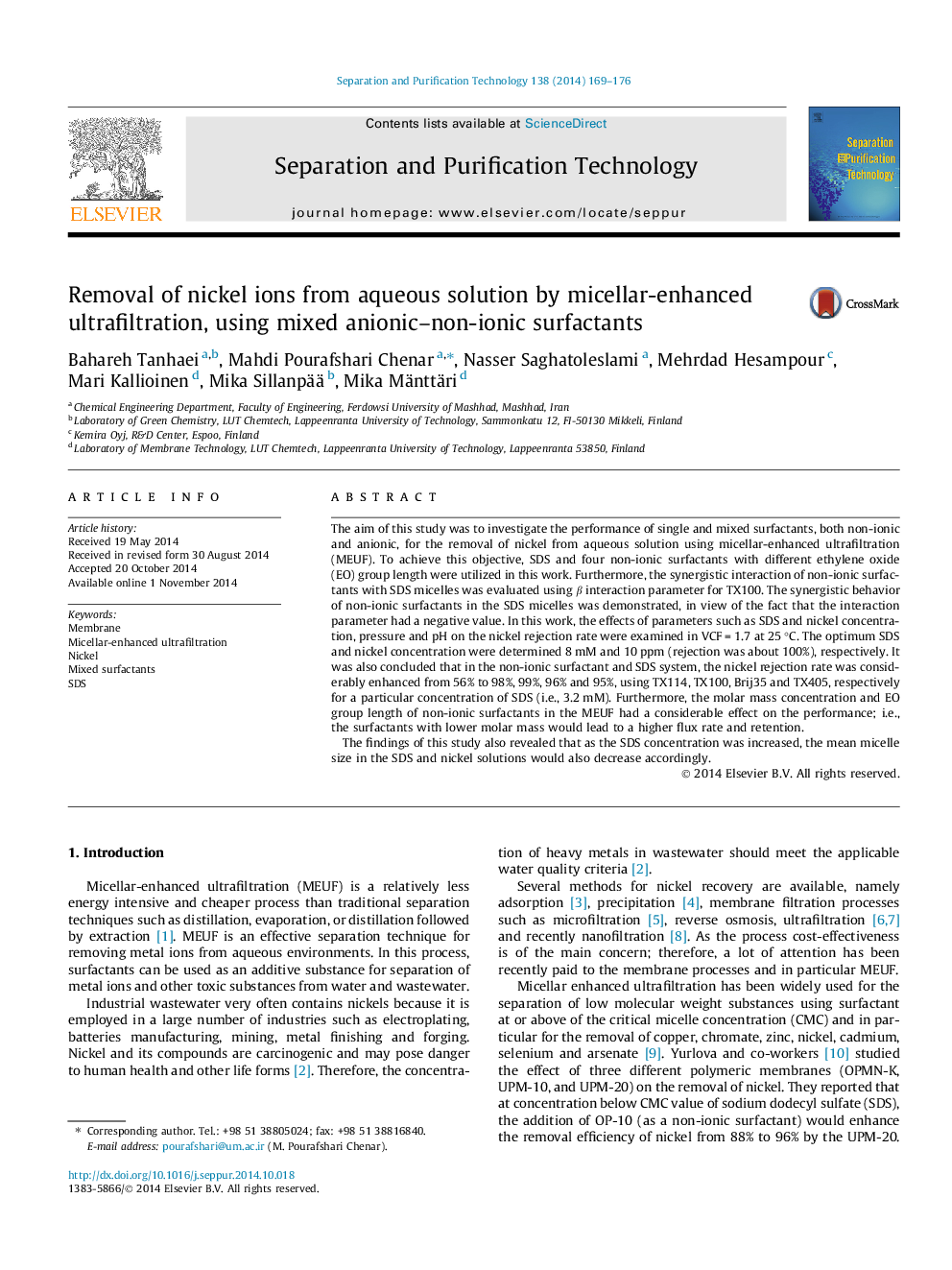| کد مقاله | کد نشریه | سال انتشار | مقاله انگلیسی | نسخه تمام متن |
|---|---|---|---|---|
| 640864 | 1456981 | 2014 | 8 صفحه PDF | دانلود رایگان |
• MEUF was successfully used for the nickel ion removal using mixed surfactants.
• The mean micelle sizes at SDS and nickel solutions were measured.
• A negative value of β demonstrated synergistic behavior of non-ionic surfactants.
• Non-ionic surfactants with more EO groups caused to lower flux and higher fouling.
• Addition of non-ionic surfactants improved the nickel rejection rate to as much as 97%.
The aim of this study was to investigate the performance of single and mixed surfactants, both non-ionic and anionic, for the removal of nickel from aqueous solution using micellar-enhanced ultrafiltration (MEUF). To achieve this objective, SDS and four non-ionic surfactants with different ethylene oxide (EO) group length were utilized in this work. Furthermore, the synergistic interaction of non-ionic surfactants with SDS micelles was evaluated using β interaction parameter for TX100. The synergistic behavior of non-ionic surfactants in the SDS micelles was demonstrated, in view of the fact that the interaction parameter had a negative value. In this work, the effects of parameters such as SDS and nickel concentration, pressure and pH on the nickel rejection rate were examined in VCF = 1.7 at 25 °C. The optimum SDS and nickel concentration were determined 8 mM and 10 ppm (rejection was about 100%), respectively. It was also concluded that in the non-ionic surfactant and SDS system, the nickel rejection rate was considerably enhanced from 56% to 98%, 99%, 96% and 95%, using TX114, TX100, Brij35 and TX405, respectively for a particular concentration of SDS (i.e., 3.2 mM). Furthermore, the molar mass concentration and EO group length of non-ionic surfactants in the MEUF had a considerable effect on the performance; i.e., the surfactants with lower molar mass would lead to a higher flux rate and retention.The findings of this study also revealed that as the SDS concentration was increased, the mean micelle size in the SDS and nickel solutions would also decrease accordingly.
Journal: Separation and Purification Technology - Volume 138, 10 December 2014, Pages 169–176
